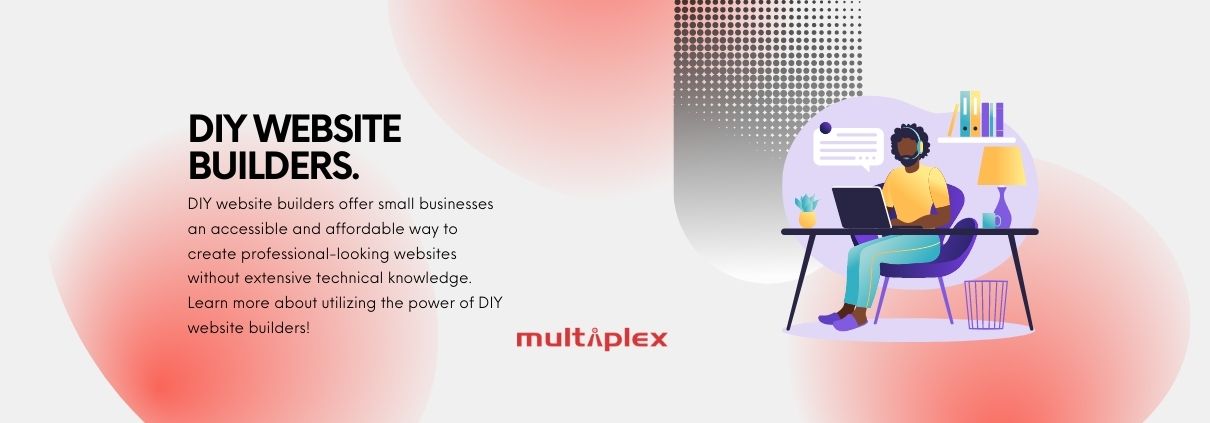DIY Website Builders
Introduction:
DIY website builders offer small businesses an accessible and affordable way to create professional-looking websites without extensive technical knowledge. This section will delve into the advantages and disadvantages of DIY website builders, popular options, and tips for selecting the right builder and customizing your website.
1. Pros and Cons of Using DIY Website Builders
1.1 Advantages
- Cost-effective: DIY website builders are generally more affordable than hiring a professional web designer, making them a suitable option for small businesses with limited budgets.
- User-friendly: Website builders feature intuitive drag-and-drop interfaces, enabling non-technical users to design and customize their websites with ease.
- Quick setup: With pre-designed templates and built-in features, you can create a functional website in a relatively short amount of time.
- No coding skills required: DIY website builders eliminate the need for extensive programming knowledge, allowing business owners to focus on design and content.
“A successful website does three things: It attracts the right kinds of visitors, guides them to the main services or products you offer, and collects contact details for future ongoing relations.” – Mohamed Saad
1.2 Disadvantages
- Limited customization: While website builders offer various templates and features, they may not provide the same level of customization as custom website designs.
- Potential similarity: Many other businesses may use the same templates or designs, resulting in a less unique online presence.
- Scalability limitations: As your business grows, you may outgrow the capabilities of your website builder and need to transition to a more flexible platform.
2. Examples of Popular Website Builders
2.1 Wix
Wix is a popular website builder known for its user-friendly interface and extensive customization options. With hundreds of templates and a vast app market, Wix caters to various industries and website types.
2.2 Squarespace
Squarespace is renowned for its sleek, modern templates and focus on visual design. Ideal for creative businesses and portfolios, Squarespace also offers e-commerce capabilities and blogging tools.
2.3 Weebly
Weebly is a beginner-friendly website builder that offers a range of templates and features to support small businesses, including e-commerce and marketing tools.
“Websites promote you 24/7: No employee will do that.” – Paul Cookson
3. How to Choose the Right Website Builder for Your Business
3.1 Assess Your Needs
Determine your website’s primary goals, target audience, and desired features to help you select a website builder that aligns with your needs.
3.2 Compare Features
Compare the features offered by different website builders, such as template variety, e-commerce capabilities, blogging tools, and third-party integrations.
3.3 Evaluate Ease of Use
Choose a website builder with an intuitive interface that enables you to design and manage your website without extensive technical knowledge.
3.4 Consider Pricing
Evaluate the pricing plans of various website builders, ensuring they fit within your budget while providing the features and support necessary for your website’s success.
4. Tips for Designing and Customizing Your Website Using a Website Builder
4.1 Choose a Responsive Template
Select a responsive template to ensure your website looks and functions well on various devices and screen sizes.
4.2 Prioritize Branding and Visual Consistency
Incorporate your brand colors, fonts, and logos to create a cohesive and professional-looking website.
4.3 Optimize for SEO
Use built-in SEO tools and best practices, such as proper heading tags, descriptive URLs, and keyword-rich content, to improve your website’s search engine visibility.
4.4 Test User Experience
Regularly test your website on different devices and browsers to ensure a smooth and enjoyable user experience.
“Make your website so easy to navigate that even a child could find what they’re looking for.” – Neil Patel
4.5 Use High-Quality Images and Media
Incorporate high-quality images, videos, and other media to make your website visually appealing and engaging for visitors.
4.6 Keep Navigation Simple and Intuitive
Organize your website’s content in a logical and straightforward manner, using clear navigation menus and headings to guide users through your site.
4.7 Regularly Update and Maintain Your Website
Ensure your website remains fresh and relevant by regularly updating content, monitoring website performance, and addressing any technical issues that arise.
4.8 Use Analytics to Track Performance
Utilize built-in analytics tools to monitor your website’s performance, identify areas for improvement, and make data-driven decisions to enhance user experience and conversions.
“Your website is the center of your digital ecosystem, like a brick and mortar location, the experience matters once a customer enters, just as much as the perception they have of you before they walk through the door.” – Leland Dieno
In conclusion, DIY website builders offer an accessible and cost-effective solution for small businesses looking to establish a professional online presence. By understanding the pros and cons, exploring popular options, selecting the right builder for your needs, and implementing best practices for design and customization, you can create a successful website that supports your business goals and engages your target audience.




